| Recent Featured Videos and Articles | Eastern “Orthodoxy” Refuted | How To Avoid Sin | The Antichrist Identified! | What Fake Christians Get Wrong About Ephesians | Why So Many Can't Believe | “Magicians” Prove A Spiritual World Exists | Amazing Evidence For God | News Links |
| Vatican II “Catholic” Church Exposed | Steps To Convert | Outside The Church There Is No Salvation | E-Exchanges | The Holy Rosary | Padre Pio | Traditional Catholic Issues And Groups | Help Save Souls: Donate |  |
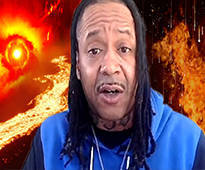
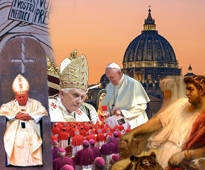
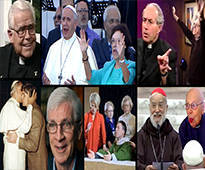
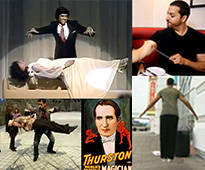
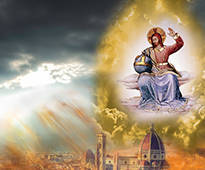

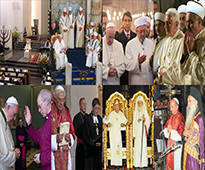


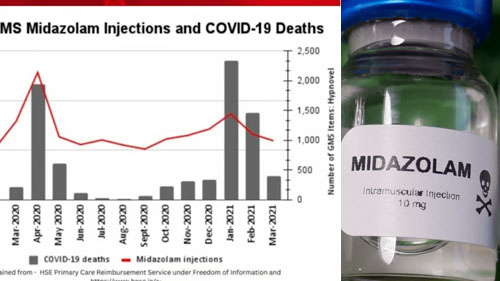 " />
" /> " />
" />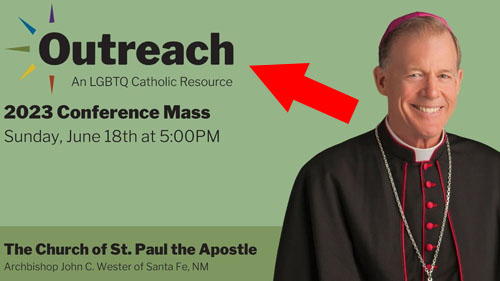 " />
" /> " />
" /> " />
" />




Our Benedictine Community
The Founder of our Benedictine community:
Brother Joseph Natale O.S.B.
Brother Joseph Natale was trained at St. Vincent’s benedictine Arch-abbey in Latrobe, PA. St. Vincent’s Arch-abbey was the largest Benedictine monastery in the United States. In the 1960’s, Bro. Joseph left with the permission of the then Archabbot Dennis Strittmatter to start his own Benedictine community. Shortly after leaving St. Vincent’s, Bro. Joseph started his Benedictine community in southern New Jersey. Bro. Joseph never allowed the New Mass to be celebrated at his monastery, only allowing the traditional Roman Rite Mass. Bro. Joseph printed, distributed and sold numerous books, pamphlets and audio tapes defending the Catholic faith and educating Catholics about the true teachings of Catholicism. In 1994, the community was given a piece of land in rural New York. Bro. Joseph wrote and stated on many occasions that he would be moving the community to New York. But Bro. Joseph was not able to complete this desire, due to the fact that he died on November 11, 1995. After Bro. Joseph died, Bro. Michael Dimond, O.S.B. was elected superior of the community. Bro. Michael immediately went to work to fulfill Bro. Joseph’s wish to move the community to New York. In late 1997, Most Holy Family Monastery finally finished moving the community and its belongings to New York.
Bro. Michael Dimond O.S.B.
Raised in a family with no religion, Bro. Michael Dimond converted to Catholicism at the age of 15. Brother Michael Dimond entered Most Holy Family Monastery in 1992 at the age of 19, a short time after graduating from high school. Brother Michael Dimond’s father graduated from Princeton University in New Jersey and his mother graduated from Stanford University in California. Brother Michael Dimond was elected superior of Most Holy Family Monastery in late 1995. Bro. Dimond took his final vows before a validly ordained priest.
About Benedictine communities
The following information is taken from the articles on “St. Benedict” and “Benedictine” in the 1907 Catholic Encyclopedia:
A Benedictine community is a community that lives under the Rule of St. Benedict. In the Benedictine order there is no general or common superior over the whole order other than the pope, and the order consists, so to speak, of what are practically a number of orders, called “congregations”, each of which is self-governing; all are united, not under the obedience to one general superior, but only by the spiritual bond of allegiance to the same Rule, which may be modified according to the circumstances of each particular house or congregation.(1)
“According to Saint Benedict’s idea, each Benedictine monastery constituted a separate, independent, autonomous family, the members of which elected their own superior.”(2) Each Benedictine monastery is unique in so far as they take upon themselves whatever work is necessary for the well-being of their community and of the Church. “Thus during the life of the saint (Benedict) we find what has ever since remained a characteristic feature of Benedictine houses, i.e. the members take up any work which is adapted to their particular circumstances, any work which may be dictated by their necessities. Thus we find Benedictines teaching in the poor schools and in the universities, practicing the arts and following agriculture, undertaking the care of souls, or devoting themselves wholly to study.”(3)
“The hours ordered by the Rule to be devoted daily to systematic reading and study, have given to the world many of the foremost scholars and writers, so that the term ‘Benedictine learning’ has been for long centuries a byword indicative of the learning and laborious research fostered in the Benedictine cloister. The regulations regarding the reception and education of children, moreover, were the germ from which sprang up a great number of famous monastic schools and universities which flourished in the Middle Ages.”(4) The work of education and the cultivation of literature have always been looked upon as belonging by right to the Benedictines.(5)
Besides being the chief educational centers during the Middle Ages, the monasteries were, moreover, the workshops where precious manuscripts were collected, preserved, and multiplied. To the monastic transcribers the world is indebted for most of its ancient literature, not only the Scriptures and the writings of the Fathers, but those of the classical authors also.(6)
Early Constitution of the Order of St. Benedict
During the first four or five centuries after the death of St. Benedict there existed no organic bond of union among the various monasteries other than the Rule itself and obedience to the Holy See. According to St. Benedict, each Benedictine monastery constituted an independent family,(7) the members of which elected their own superior.(8) Each monastery was to be self-contained, self-governing, managing its own affairs, and subject to no external authority except that of the local diocesan bishop, whose powers of control were, however, limited to certain specific conditions.(9)
So intimately connected with domestic life is the whole framework and teaching of the Rule that a Benedictine may be more truly said to enter or join a particular household than to join an order. The Benedictine ideal of poverty is quite different from the Franciscan. The Benedictine takes no explicit vow of poverty; he only vows obedience according to the Rule. The Rule allows all that is necessary to each individual, together with sufficient and varied clothing, abundant food (except the flesh meat of four footed animals), and ample sleep. Possessions could be held in common, they might be large, but they were to be administered for the furtherance of the work of the community and for the benefit of others. While the individual monk was poor, the benedictine monastery was to be in a position to give alms, not to be compelled to seek them. It was to relieve the poor, to clothe the naked, to visit the sick, to bury the dead, to help the afflicted, to entertain all strangers. The poor came to St. Benedict to get help to pay their debts, they came for food.(10) Abbots came to see and advise with St. Benedict. Men of all classes were frequent visitors, and he numbered nobles and bishops among his intimate friends. There were nuns in the neighborhood whom the monks went to preach to and to teach. There was a village nearby in which St. Benedict preached and made many converts.(11)
In the valley of Subiaco, Italy, St. Benedict built 12 benedictine monasteries. At the Benedictine monasteries at Subiaco, Italy, we find no solitaries, no conventual hermits, no great austerities, but men living together in organized Benedictine communities for the purpose of leading good lives, doing such work as came to their hand- carrying water up the steep mountain-side, doing the other household work, raising the twelve cloisters, clearing the ground, making gardens, teaching children, preaching to the country people, reading and studying at least four hours a day, receiving strangers, accepting and training new-comers, attending the regular hours of prayer, reciting and chanting the 150 psalms.(12)
Concerning Members of Benedictine Communities
In 1907, the Catholic Encyclopedia pointed out that, “At the present day there is hardly a congregation, Benedictine or otherwise, that has not its lay brethren, and even amongst numerous orders of nuns a similar distinction is observed, either between the nuns that are bound to choir and those that are not so enclosed. The habit worn by the lay brethren is usually a modification of that of the choir monks, sometimes differing from it in color as well as in shape; and the vows of the lay brethren are in most congregations only simple, or renewable periodically, in contrast with the solemn vows for life taken by the choir religious.”(13)
Our Community
As is obvious from our website, our community is heavily involved with educating people about what they must know and do in order to save their souls, which is the most important work of charity with which anyone could be involved. “Without faith it is impossible to please God” (Heb. 11:6). And without the Catholic faith it is impossible to be saved. Therefore, our work as Catholic Benedictine monks – especially in this time of the great apostasy – necessarily involves educating Catholics about the true dogmas of the Church and condemning the heresies that are rampant today. Our work also deeply involves exposing the counterfeit Catholic Church of the Vatican II sect, which is deceiving millions of those who profess to be Catholic. This counterfeit Vatican II sect – with its antipopes – is the primary enemy of Jesus Christ today. It is most dangerous for the salvation of souls because it purports to be the Catholic Church but it is not. This is why we dedicate much effort to exposing it.
We also work and pray for the salvation of all non-Catholics, producing and distributing mass quantities of information with the goal of converting them to the one true faith, outside of which no one can be saved. In our apostolic work (called an “apostolate”), we have distributed almost 1 million copies of our videos, audios, DVDs and books. The material that we have distributed and continue to distribute covers a wide variety of topics that are essential, including (to name a few): the necessity of prayer; the eternity and pains of Hell; the shortness of life; miraculous conversion stories; the authenticity of Sacred Scripture; the special creation of the earth; the refutation of the theory of evolution; the miracles and marvels of the Catholic saints; the importance of the message of Fatima; the authenticity of the Shroud of Turin; the Communist and Freemasonic plot against the Catholic Church; the evils of Rock Music; the false and invalid New Mass; the false Second Vatican Council; the false Vatican II antipopes; the dogma outside the Church there is no salvation; and many others.
We also have spoken personally to thousands concerning the true Catholic faith and a person’s obligation to profess it.
Our Community is dedicated first and foremost to Jesus Christ, our Savior, and the worship of the Most Holy Trinity (Father, Son and Holy Ghost)– the One True God – and the profession of the Catholic faith whole and inviolate. Secondly, our Community is deeply dedicated to the promotion of the Holy Rosary as the primary private devotion for a Catholic. Just as without the faith it is impossible to please God, so it is true that without a strong prayer life it is impossible to be saved. We especially promote the 15 decade Rosary, which the monks recite each day. We believe that the 15 decade Rosary is the key to the salvation of many souls and we encourage everyone to attempt to say it and promote it to others. The monks have personally witnessed the incredible transformation in the lives of many people through the 15 decade Rosary. The power of the Holy Rosary is truly amazing, and God has revealed that He has conferred even more efficacy upon the Holy Rosary in our dark days. St. Louis De Montfort recommends one set of mysteries at three different times in the day as an effective way to say the entire Rosary each day. We believe that the salvation of millions of souls hinges upon the practice of a true devotion to the Mother of God and the necessary foundation of a pure profession of the true Catholic faith.
In addition to the above, our community practices (and encourages others to practice) devotion to saints, not only by getting to know their extraordinary devotion to God by learning about their lives, but also by praying to them to intercede with God for us. We have posted on our website a few prayers to saints that we recommend (and we plan to add more). At Most Holy Family Monastery we recite at least one prayer each day to St. Benedict (our founder), St. Therese of Lisieux, St. Michael the Archangel, Jacinta the shepherdess of Fatima, St. Joseph, and St. Jude.
Promises made to St. Benedict regarding the destiny of his Benedictine order and that of its friends and enemies:
1) His order will continue to exist to the End of the World.
2) It will, at the End of the World, in the final battle, render great services to the holy Church and confirm many in the faith.
3) No one shall die in the Order whose salvation would not be assured. And if a monk begins to lead a bad life and does not amend, he will fall into disgrace, or be expelled from the Order, or will leave it of his own accord.
4) Everyone who persecutes his order and does not repent will see his days shortened or meet with an unfortunate end.
5) All, however, who love his order will obtain a happy death.(14)
* Note: Promise number#3 obviously does not apply to the “Benedictines” of the Novus Ordo/Vatican II sect, who claim to be Benedictines but aren’t. Likewise, it does not apply to any heretical group which claims to be a Benedictine community.
Endnotes
1) The Catholic Encyclopedia, New York: Robert Appleton Company, 1907, Vol. 2, p. 443
2) The Catholic Encyclopedia, Vol. 2, p. 458
3) The Catholic Encyclopedia, Vol. 2, p. 471
4) The Catholic Encyclopedia, Vol. 2, p. 440
5) The Catholic Encyclopedia, Vol. 2, p. 456
6) The Catholic Encyclopedia, Vol, 2, p. 457
7) The Catholic Encyclopedia, Vol. 2, p. 444
8) The Catholic Encyclopedia, Vol. 2, p. 458
9) The Catholic Encyclopedia, Vol. 2, p. 444
10) The Catholic Encyclopedia, Vol. 2, p. 469
11) The Catholic Encyclopedia, Vol. 2, p. 471
12) The Catholic Encyclopedia, Vol. 2, p. 470
13) The Catholic Encyclopedia, Vol. 2, p. 453
14) The Life of St. Benedict, by St. Gregory the Great, Rockford, IL: TAN Books, 1995, p. 57; also found in Arnoldus Visiones: Lignum Vitae, Rome, 1595.
Sign up for our free e-mail list to see future vaticancatholic.com videos and articles.
Recent Content
^